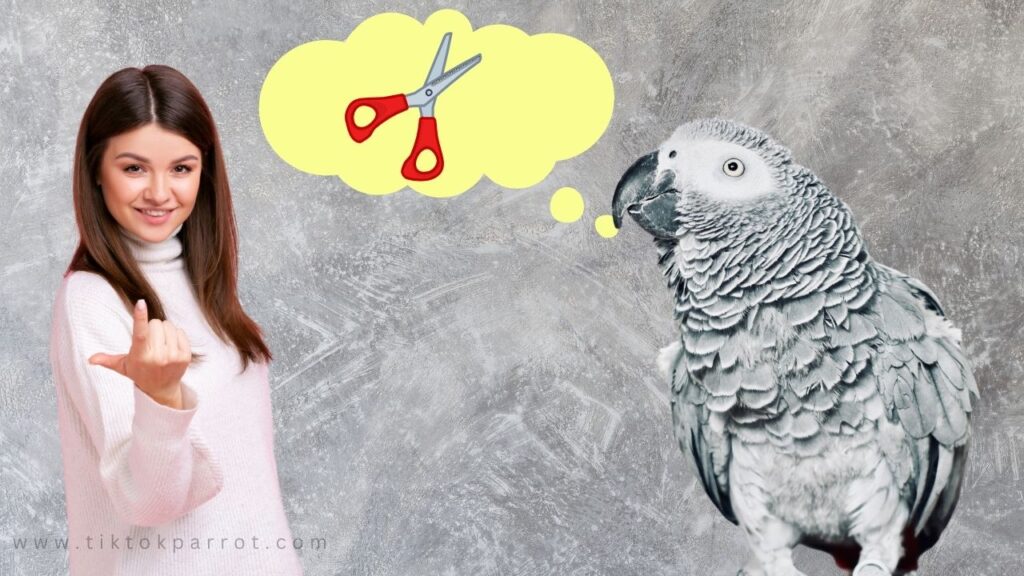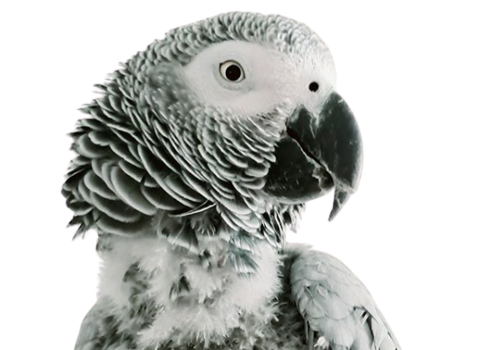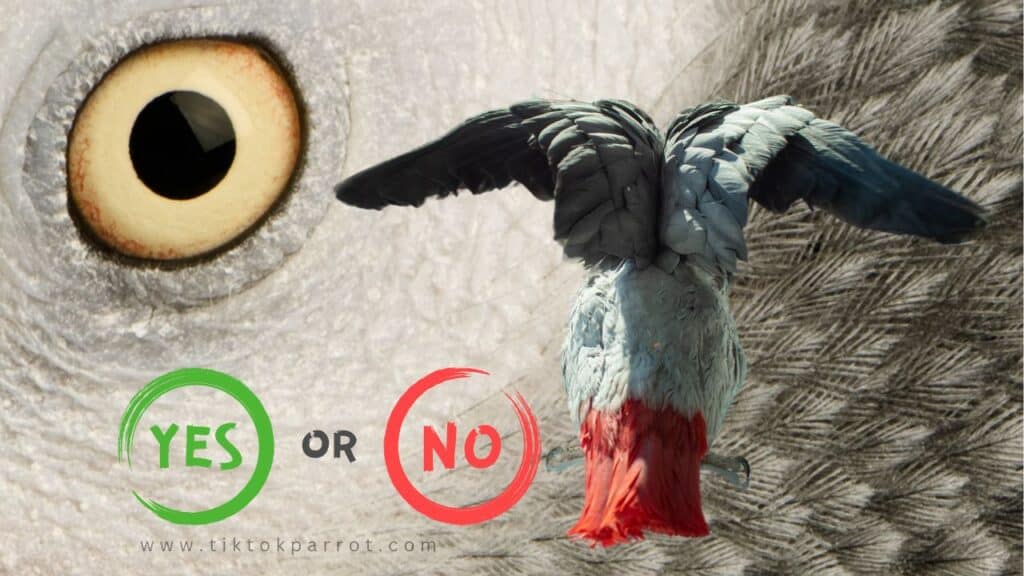Feather Care: How to Clip Your African Grey’s Wings Safely and Effectively
Hello to all you proud parrot parents out there! If you’ve ever found yourself chasing a feathered escape artist around your living room, you might have considered wing clipping as a way to keep those flighty ambitions in check. But don’t worry, it’s not just you — many parrot owners face the same flappy predicament. Today, we’re going to talk about how to clip your African Grey’s wings safely and humanely, ensuring both their safety and your peace of mind.
Discover essential tips for safely clipping your African Grey’s wings. Learn safe & humane techniques, benefits & considerations to keep your feathered friend safe & happy. Clip like a pro with our guide!
Let’s face it, African Greys are majestic creatures. Imagine a sleek, silver spaceship with a mischievous glint in its eye – that’s your African Grey, plotting their next escape to explore the forbidden lands (otherwise known as your kitchen counters).
Their intelligence and boundless energy are part of what makes them such captivating companions, but it can also lead to some, ahem, “spirited adventures.” This often translates to one question for many African Grey owners: to clip, or not to clip?

Well, fret no more, fellow parrot parents! After reading this complete article, you will not need to take your parrot out for grooming/ haircut. Because I’m here to navigate the sometimes choppy waters of wing clipping for your African Grey. This guide will equip you with the knowledge and confidence to make an informed decision and, if you choose to clip, ensure the process is safe, humane, and (dare we say) even a bonding experience (well, maybe not for your Grey, but hey, small victories!).
Why Clip Your African Grey’s Wings?
First off, let’s tackle the big question: Why clip at all? For African Greys, who are both intelligent and naturally curious, the indoor environment poses many hazards. Windows, mirrors, open water vessels, and toxic houseplants can all be threats to a freely flying parrot. Clipping the wings can help prevent these dangers without harming your bird — when done correctly.
Before I dive into the nitty-gritty, let’s address the elephant in the room (or rather, the parrot on the curtain rod). Why would you even consider clipping your African Grey’s wings? Here are some valid reasons:
- Safety First: African Greys are notorious escape artists. An open window, a gust of wind, and suddenly your feathered friend is soaring through the neighborhood, vulnerable and lost. Clipping their wings reduces the risk of escapes, keeping them safe and sound within the confines of your home (or at least within a reasonable distance!).
- Training and Taming: A controlled flight can sometimes hinder training and taming efforts. Clipping their wings can make them more reliant on you for interaction and easier to manage during training sessions.
- Preventing Injuries: Those magnificent wings can sometimes lead to unfortunate encounters with ceiling fans, windows, or hot stoves. Clipping can minimize the risk of these accidents.
But Wait, There’s More! The Not-So-Obvious Perks of Clipping
Believe it or not, wing clipping can even have some unexpected benefits for your African Grey:
- Reduced Stress: The constant desire to fly can be stressful for some parrots, especially in confined spaces. Clipping can alleviate this anxiety and promote a calmer demeanor.
- Enhanced Bonding: Clipping can lead to more interaction and playtime with you outside the cage as they rely on you for getting around.
Now, the Moment You’ve Been Waiting For: How to Clip Like a Pro

Before you even think about touching those scissors, make sure you have the right tools. You’ll need a pair of sharp, clean bird nail scissors or a specialized bird clipping shears — no, your kitchen scissors won’t do the trick! It’s also a good idea to have some styptic powder on hand, just in case you accidentally clip too close to a blood feather.
Alright, you’ve decided clipping is the right choice. But how do you actually do it? Here’s a step-by-step guide:
- Gather Your Supplies: You’ll need sharp bird clippers (consult an avian vet for recommendations), styptic powder (to stop minor bleeding), a towel, and a trusted helper (because trust us, a two-feathered tornado is not easy to wrangle!).
- Find a Calm and Quiet Space: A familiar room with minimal distractions will help keep your African Grey relaxed.
- Prepare Yourself Mentally: This might sound silly, but be prepared for some squawking and maybe a little bit of resistance. Stay calm and patient, and your Grey will pick up on your energy.
- Secure Your African Grey: Gently but firmly wrap your African Grey in a towel, leaving only the wing you’ll be clipping exposed. Your helper can hold the bird securely while you work.
- Identify the Primary Flight Feathers: These are the long feathers on the outermost part of the wing. You’ll want to clip a small portion (about half an inch) of the rachis (the shaft) of these feathers.
- Clip with Confidence: Make a clean, swift cut using the sharp clippers. Avoid blood vessels and nerves, which are located closer to the body. If you see any bleeding, use the styptic powder to stop it immediately.
- Repeat on the Other Wing: Follow the same steps for the other wing, ensuring a symmetrical clip.
- Let Your African Grey Stretch and Preen: Unwrap your feathered friend and allow them to preen and adjust to their new “haircut.” 😉
Pro Tips for a Smooth Wing Clipping Experience
Don’t think the article is finished and you can start the business I mean clipping your parrot wings. You will need to keep reading the pro tips which I am going to share with you. Once you read the complete guide, you will be an expert at home and groom your birdy fellow. Below are some quick tips which you need to keep in mind before start clipping.
- Practice Makes Perfect: Before attempting the real deal, practice clipping on a feather you’ve molted or use a piece of paper to get a feel for the clippers.
- Reward Good Behavior: Positive reinforcement goes a long way. Offer treats or praise throughout the process to keep your African Grey calm and cooperative (relatively speaking, of course).
- Preparation: Calm your Grey by speaking softly and perhaps offering a favorite treat. It’s best to have a helper who can gently hold the bird during the process.
- Hold the Wing: Extend the wing gently but firmly to expose the feathers. Ensure your bird is comfortable and not overly stressed.
- Identify the Right Feathers: Look for the first five to seven primary feathers. These are usually the ones you’ll be trimming.
- Don’t Wing It Alone (Literally): Having a trusted helper is crucial. They can hold your Grey securely, offer moral support, and maybe even distract your feathered friend with a favorite toy.
- Clip Carefully: Clip one feather at a time, cutting parallel to the shaft to avoid cutting any blood feathers (those with visible blood supply). If your bird’s feathers are darker, you’ll need good lighting to spot these.
- Check and Comfort: After clipping, let your bird test their flying ability in a safe, enclosed area. They should be able to glide downwards gently, not plummet.
- Consider a Professional: If the thought of clipping your African Grey’s wings fills you with dread, don’t be afraid to seek professional help. Avian vets or experienced bird groomers can perform the clipping safely and efficiently.
Beyond the Clip: Important Considerations
Wing clipping is just one piece of the puzzle when it comes to responsible African Grey ownership. Here are some additional points to remember:
- Clipping is Not Permanent: The good news (or bad news, depending on your perspective) is that clipped wings eventually grow back. This means you’ll need to repeat the clipping process every few months, typically during molting season.
- Clipping Doesn’t Mean Flightless: While clipping significantly reduces flight capabilities, it doesn’t eliminate them entirely. Your African Grey may still be able to glide or flutter, so supervision is still essential near windows and open doors.
- Clipping Doesn’t Replace Training: A well-trained African Grey is still a happy African Grey, clipped or not. Continue positive reinforcement training to ensure your feathered friend is well-behaved and understands boundaries.
Aftercare
Once the clipping is done, give your bird some time to adjust. Some birds might be a bit miffed or disoriented after clipping, so extra cuddles or treats can help reassure them.
Common Mistakes to Avoid
- Over-clipping: This can lead to injuries from falling. Remember, the idea is to prevent sustained flight, not to immobilize your bird.
- Ignoring Blood Feathers: Cutting these can cause significant bleeding and distress.
- Clipping Without Assistance: Trying to clip wings without help can lead to accidents and stress for both you and your bird.
how often do you clip an African grey wings?
The decision of how often to clip an African Grey’s wings is a complex one and depends on several factors. Here’s a breakdown to consider:
- Flight Ability: Generally, wing clipping is not necessary for African Greys who live in large enclosures and can safely fly within that space.
- Safety Concerns: If your African Grey has a history of flying into windows, walls, or other dangerous situations, then clipping may be necessary for their safety.
- Training and Enrichment: Clipped birds need alternative ways to exercise and expend energy. If you can provide a safe flightless environment with plenty of enrichment activities, then clipping might not be needed.
- Behavioral Issues: Sometimes, wing clipping can be used to address specific behavioral problems like excessive flying or aggression. However, addressing the root cause of the behavior is often a more sustainable solution.
Here’s a general guideline, but consulting an avian veterinarian or experienced bird trainer is highly recommended:
- Young Chicks: Never clip the wings of a young chick who is still learning to fly.
- Adults: For adult African Greys with safety concerns, some recommend clipping every 4-6 months, but this can vary depending on individual feather growth rates.
Alternatives to Wing Clipping:
- Flight Training: Training your Grey to fly to specific locations within your home can provide some control.
- Safe Flight Space: Create a large, enclosed space where your Grey can fly safely.
- Enrichment Activities: Offer plenty of climbing structures, foraging toys, and mental stimulation to keep them occupied.
Remember, wing clipping is a kind of permanent modification, it takes long time to grow back and should only be done as a last resort.
Understanding Feather Anatomy
Knowing what to clip is as crucial as knowing how. African Greys have primary and secondary feathers. The primary feathers are the long ones at the tip of the wing, crucial for flight. Secondary feathers are shorter and closer to the body, aiding in lift and precision during flight.
For a safe clipping, you’ll focus on the primary feathers, but never all of them! The goal is to reduce flight, not eliminate it entirely or cause imbalance and discomfort.
Wrapping Up
Ultimately, the decision to clip your African Grey’s wings is a personal one. Weigh the pros and cons carefully, consider your bird’s individual personality and needs, and consult with your avian veterinarian for guidance. Remember, the goal is to ensure both your safety and your African Grey’s well-being.
Wing clipping, when done thoughtfully, can be a safe way to keep your African Grey healthy and out of trouble. It’s all about balance — keeping them grounded but still dignified. Remember, every bird is different, so observe how yours reacts and adjust as necessary.
So, are you ready to become a wing-clipping pro? With the right preparation, knowledge, and maybe a dash of humor (because let’s face it, sometimes your African Grey will make you laugh, even during a stressful clip), you can navigate this process and maintain a happy, healthy relationship with your feathered friend.
Have you tried wing clipping with your African Grey? How did it go? Share your experiences and tips in the comments below — I would love to hear from you!
If you found this blog helpful, It would be great if you could share it with your family and friends who might find it useful as well.
You might like to read these as well 🙂
Should You Clip Your Bird Wings?
Can African grey clipped wings grow back?
Parrot Care Tips! Easy & Simple To Understand
10 Basic Care Tips for African Grey Parrot Owners
Step by Step Guide: Grooming African Grey Parrot Claws
Are African Grey Parrots Right For You?
For more useful content about African grey parrots, you can subscribe my site with your email to get notification upon publishing a new blog, the subscribe box you can see on the right side of this page. Also if you get an alert on your web browser while browsing my site, allow it and that will also give you an alert whenever I publish a new blog. 🙂
Stay safe and much love!



